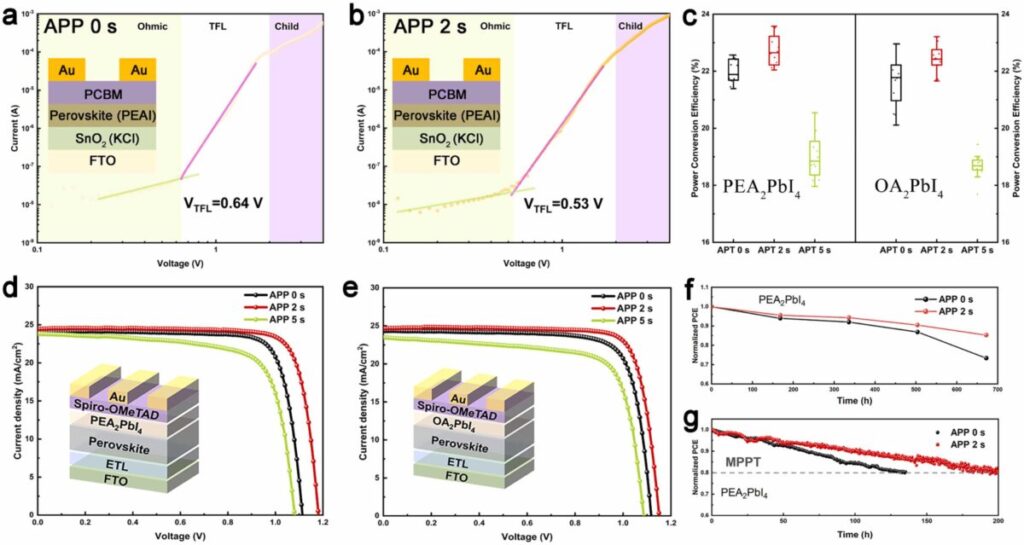Researchers in China have used an argonplasma polishes pre-treatment (app) to remove surface defects and to increase the effectiveness of passivating in perovskiet solar cells. The result is a Perovskite device with a 2D interface that considerably improves stability and performance.
Researchers at Nankai University in China have manufactured a perovskite solar cell using a 2D/3D perovskiet hetero interface that improves the stability and performance of the device.
The Interface is placed between the perovskiet and the gate transport layer, which improves the transport/extraction of load carrier and at the same time suppresses Ionmigration. Cells with this architecture usually show large exciton -binding energies and are that In general, more stable than conventional 3D devices due to the protection of the organic ligandies.
The research team explained that it used an argonplasma polishes for treatment (App) to remove the surface defects from the perovskiet layer and to increase the effectiveness of the passivation.
“We have found that the app can effectively remove impurities on the surface of thin films, can eliminate perovskiet soft grilles and improve the extraction and transport of load carriers,” it emphasized. “Moreover, App can adjust the surface composition of Perovskiet, which is beneficial for subsequent low-dimensional perovskiet passion and reduces the non-rising recombination of load carriers.”
Different perovskiet films were glowed into the air for 15 minutes at 120 ° C with 25 % relative humidity and were then treated with or without app. App turned out to increase the lead -conscientiousness on the surface of the perovskiet film and a decrease in the share of iodine. “This indicates that Argon -Plasma reconstructs the surface interface of the perovskiet, so that some iodine is removed while the lead is left on the surface,” the academics emphasized.
Image: Nankai University, Next Materials, CC by 4.0
The scientists built the cell with a substrate made of glass and fluorine-doted Tinoxide (FTO), a hole transport layer (HTL) that trusted on Tinoxide (SNO2), the Perovskite -Absorber, the 2D interfacelay, An electron transport layer (ETL) based on Spiro-Toometad and a gold (au) metal contact. The performance of it was built with that of a reference cell without the app treatment.
Tested under standard lighting conditions, the cell treated with app reached a power conversion efficiency of 23.53 %, an open circuit voltage of 1.18 V, a short-circuit current density of 24.45 Mon/cm² and a filling factor of 81.5 %. The operating device, on the other hand, achieved efficiency of around 22%.
“The performance improvement is mainly attributed to the increase in the open circuit voltage, which indicates a better passivation effect by exposing the fixed perovskiet under surface for 2D transformation and effectively suppressing non-radiation recomination,” the researchers explained. “A slight increase in the short-circuit current suggests improved carrier extraction and transport on the Perovskiet interface.”
Moreover, the cell treated with app turned out to retain more than 80 % of its initial efficiency by the fourth week, while the benchmark device saw the efficiency “fast” fall to 73 %. “The improved stability indicates that further 2D passivation, achieved by removing the Perovskiet -soft schedule, contributes to better heterointerface properties,” they concluded.
The new cell concept was presented in the study “Improving 2D/3D hetero interface via Argonplasma polishes for efficient perovskite solar cells“Published in Next materials.
This content is protected by copyright and may not be reused. If you want to work with us and reuse part of our content, please contact: editors@pv-magazine.com.
Popular content


